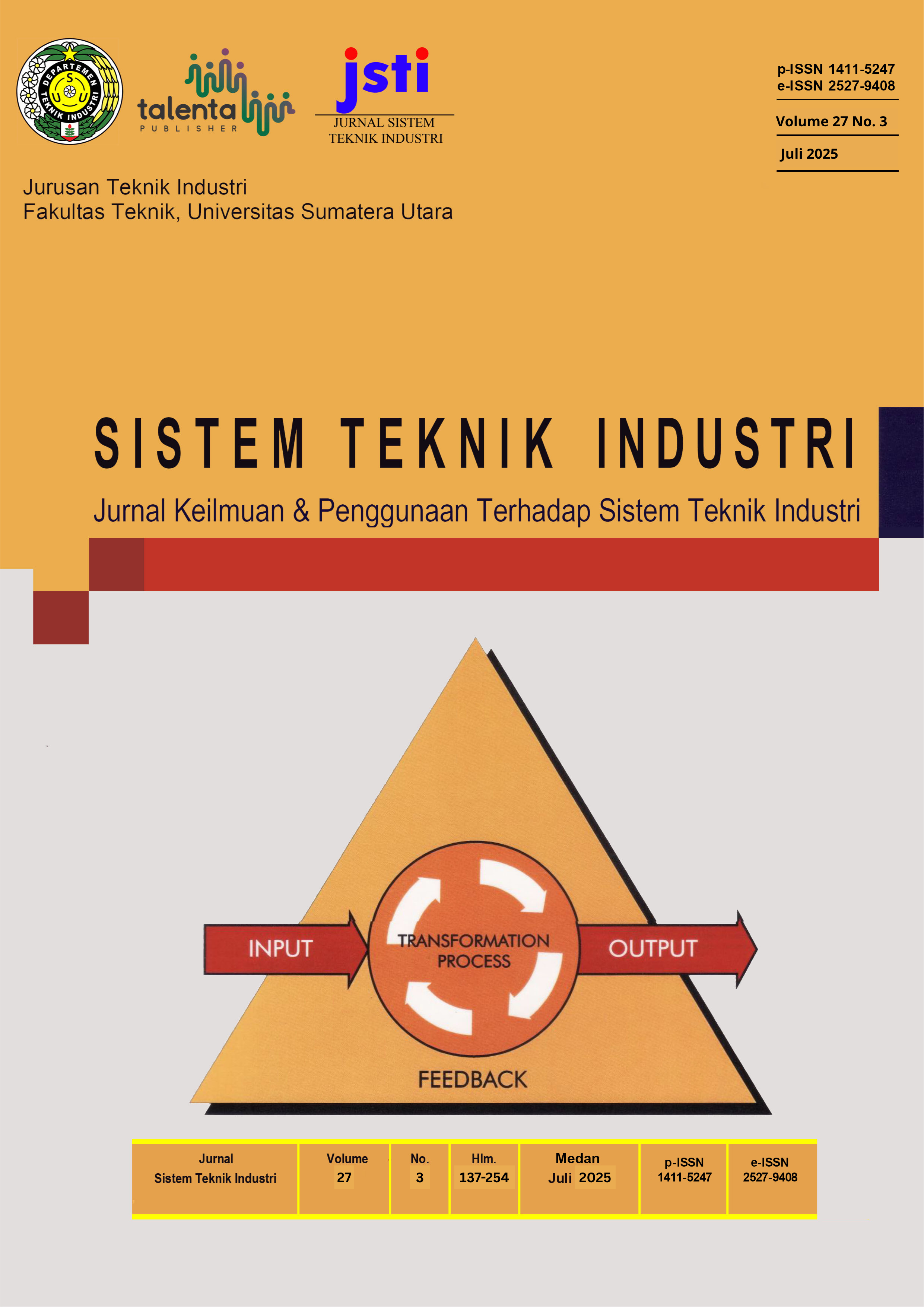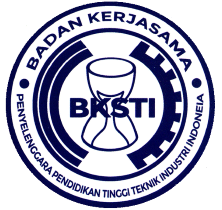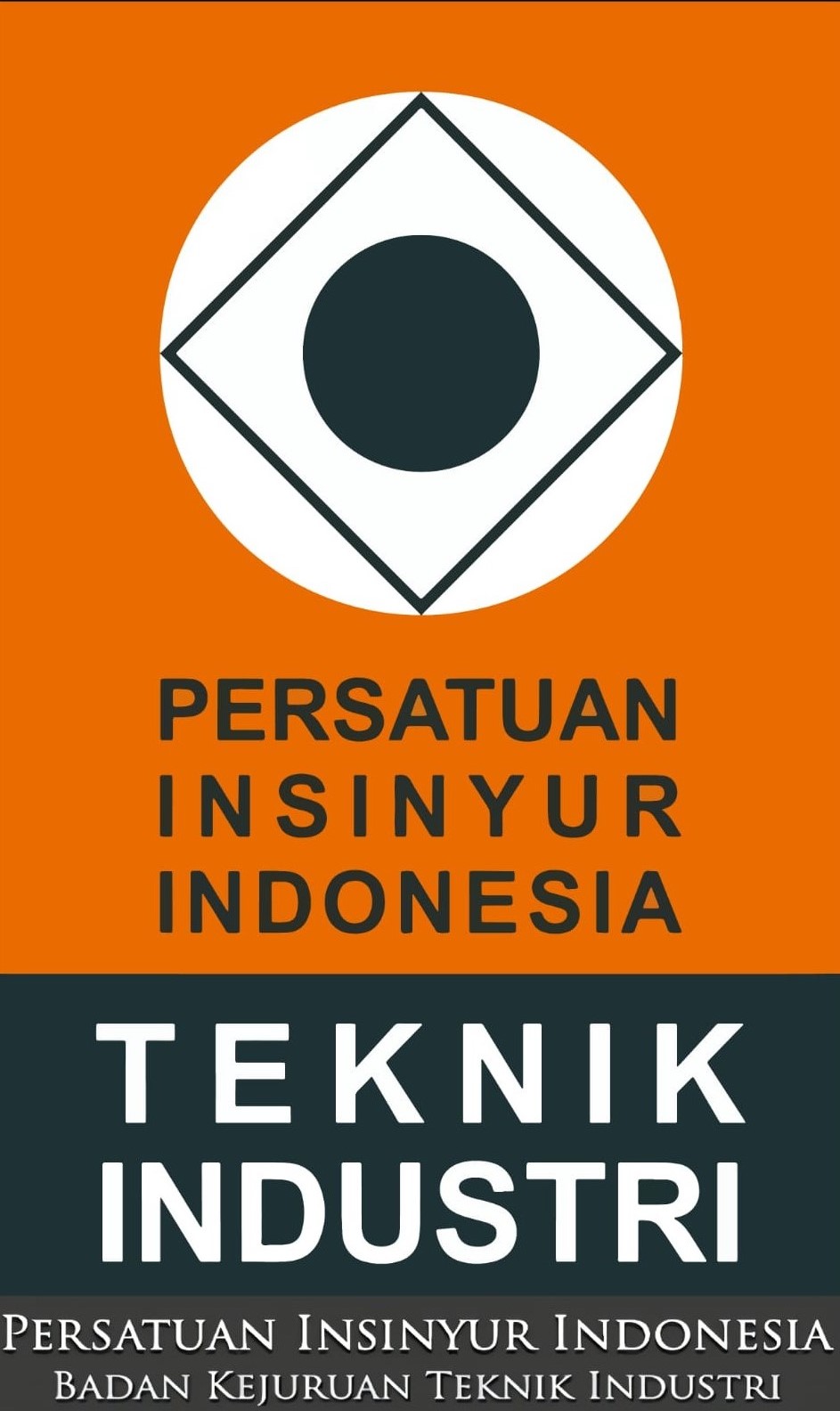The Role of Human Error in Production Process Failures: A Systematic Literature Review
DOI:
https://doi.org/10.32734/jsti.v27i3.18202Keywords:
Human Error, Production Process, FailuresAbstract
Human error One of the most common causes of production failures is human mistake, which can impact product quality, operational efficiency, and workplace safety. This research aims to analyze the role of human error in the production process using various analytical methods found in the literature. This research uses a Systematic Literature Review (SLR) approach to explore the literature related to Human Error in the production process, with the aim of identifying, evaluating, and synthesizing the results of relevant studies. This research shows that 70-90% of quality defects are caused by human error, which impacts quality, increases operational costs, and poses a risk of workplace accidents. Research shows that factors such as lack of training, misunderstanding, as well as an unergonomic work environment, stress, and unclear or complicated SOPs also increase the risk of human error. The use of methods such as CREAM (Cognitive Reliability and Error Analysis Method) is employed to evaluate human reliability and predict Human Error Probability (HEP) in complex cognitive tasks. SHERPA is a method used to identify, predict, and reduce the potential for human error in a system. HEART (Human Error Assessment and Reduction Technique) is a technique designed to estimate the likelihood of human error based on specific working conditions. FMEA (Failure Modes and Effects Analysis) is a systematic method used to identify and analyze potential failures in a process or system.
Downloads
References
J. A. Yeow, M. K. B. J. Khan, and P. K. Ng, “Enforcement of safety and health policy reduces human error in SMEs in the manufacturing industry,” Adv. Sci. Lett., vol. 23, no. 11, pp. 10656–10659, 2017, doi: 10.1166/asl.2017.10124.
R. M. Reyes, J. de la Riva, A. Maldonado, A. Woocay, and R. de la O, “Association between Human Error and Occupational Accidents’ Contributing Factors for Hand Injuries in the Automotive Manufacturing Industry,” Procedia Manuf., vol. 3, no. Ahfe, pp. 6498–6504, 2015, doi: 10.1016/j.promfg.2015.07.936.
U. Alkhaldi, M, Pathirage, C and Kulatunga, “The role of human error in accidents within oil and gas industry in Bahrain,” Usir, vol. /, no. /, pp. 821–834, 2017.
N. Sembiring, M. M. Tambunan, and M. Febriani, “Human error analysis on production process of door products with SHERPA and HEART method,” IOP Conf. Ser. Mater. Sci. Eng., vol. 505, no. 1, 2019, doi: 10.1088/1757-899X/505/1/012025.
Y. Kim, S. Yeong, J. Park, and J. Kim, “Empirical study on human error probability of procedure-extraneous behaviors,” Reliab. Eng. Syst. Saf., vol. 227, no. September 2021, p. 108727, 2022, doi: 10.1016/j.ress.2022.108727.
B. Emami-Mehrgani, W. P. Neumann, S. Nadeau, and M. Bazrafshan, “Considering human error in optimizing production and corrective and preventive maintenance policies for manufacturing systems,” Appl. Math. Model., vol. 40, no. 3, pp. 2056–2074, 2016, doi: 10.1016/j.apm.2015.08.013.
S. Digiesi, F. Facchini, G. Mossa, and M. Vitti, “A model to evaluate the Human Error Probability in inspection tasks of a production system,” Procedia Comput. Sci., vol. 217, pp. 1775–1783, 2022, doi: 10.1016/j.procs.2022.12.377.
F. Musavi, R. Hekmatshoar, M. Fallahi, A. Moradi, and M. Yazdani-Aval, “Identifying and preventing human error in the sugar production process: A multi-stage approach using HTA, HEC and PHEA techniques,” Heliyon, vol. 10, no. 9, p. e29687, 2024, doi: 10.1016/j.heliyon.2024.e29687.
M. Chafidh and A. Ayyubi, “Implementation of Poka-Yoke System to Prevent Human Error in Material Preparation for Industry,” no. July, 2020, doi: 10.1109/ISITIA49792.2020.9163707.
A. Modares, V. Bafandegan Emroozi, H. Gholinezhad, and A. Modares, “An integrated Cognitive Reliability and Error Analysis Method (CREAM) and optimization for enhancing human reliability in blockchain,” Decis. Anal. J., vol. 12, no. June, p. 100506, 2024, doi: 10.1016/j.dajour.2024.100506.
A. Kumar, “Sensitivity and reliability evaluation for a thermal power plant subject to complex failures and human error,” Multidiscip. Model. Mater. Struct., vol. 15, no. 5, pp. 895–912, 2019, doi: 10.1108/MMMS-10-2018-0165.
L. Zhang, Z. Li, Y. Yang, and M. Cui, “Human error unplanned downtime inferring and job-operator matching based on inverse optimal value method,” Comput. Ind. Eng., vol. 149, no. February, 2020, doi: 10.1016/j.cie.2020.106840.
B. Ostadi and M. S. Masouleh, “Application of FEMA and RPN techniques for man-machine analysis in Tobacco Company,” Cogent Eng., vol. 6, no. 1, pp. 1–13, 2019, doi: 10.1080/23311916.2019.1640101.
C. Nan and G. Sansavini, “Developing an agent-based hierarchical modeling approach to assess human performance of infrastructure systems,” Int. J. Ind. Ergon., vol. 53, pp. 340–354, 2016, doi: 10.1016/j.ergon.2016.04.002.
L. Yang, Q. Su, and L. Shen, “A novel method of analyzing quality defects due to human errors in engine assembly line,” Proceeding 2012 Int. Conf. Inf. Manag. Innov. Manag. Ind. Eng. ICIII 2012, vol. 3, pp. 154–157, 2012, doi: 10.1109/iciii.2012.6339943.
A. Noroozi, N. Khakzad, F. Khan, S. Mackinnon, and R. Abbassi, “The role of human error in risk analysis : Application to pre- and post-maintenance procedures of process facilities,” Reliab. Eng. Syst. Saf., vol. 119, pp. 251–258, 2013, doi: 10.1016/j.ress.2013.06.038.
D. Lee, H. Kim, K. Koo, and S. Kwon, “Human Reliability Analysis for Fishing Vessels in Korea Using Cognitive Reliability and Error Analysis Method (CREAM),” Sustain. , vol. 16, no. 9, pp. 1–26, 2024, doi: 10.3390/su16093780.
J. Böllhoff, J. Metternich, N. Frick, and M. Kruczek, “Evaluation Of The Human Error Probability In Cellular Manufacturing,” Procedia CIRP, vol. 55, pp. 218–223, 2016, doi: 10.1016/j.procir.2016.07.080.
S. Digiesi, F. Facchini, G. Mossa, and M. Vitti, “A model to evaluate the Human Error Probability in inspection tasks of a production system,” Procedia Comput. Sci., vol. 217, no. 2022, pp. 1775–1783, 2022, doi: 10.1016/j.procs.2022.12.377.
Y. Torres, S. Nadeau, and K. Landau, “Classification and quantification of human error in manufacturing: A case study in complex manual assembly,” Appl. Sci., vol. 11, no. 2, pp. 1–23, 2021, doi: 10.3390/app11020749.
K. Wang, C. Liu, and Y. Lu, “Ensemble Bayesian Network for root cause analysis of product defects via learning from historical production data,” J. Manuf. Syst., vol. 75, no. November 2023, pp. 102–115, 2024, doi: 10.1016/j.jmsy.2024.06.001.
Downloads
Published
How to Cite
Issue
Section
License
Copyright (c) 2025 TALENTA Publisher Universitas Sumatera Utara

This work is licensed under a Creative Commons Attribution-ShareAlike 4.0 International License.
The Authors submitting a manuscript do so on the understanding that if accepted for publication, the copyright of the article shall be assigned to TALENTA Publisher Universitas Sumatera Utara as the publisher of the journal.
Copyright encompasses the rights to reproduce and deliver the article in all forms and media. The reproduction of any part of this journal, its storage in databases, and its transmission by any form or medium will be allowed.



















